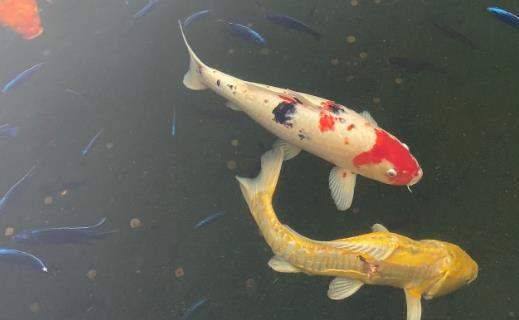Koi Lifespan: Detailed Explanations and Guidelines

I. Authoritative Lifespan Records
Scientifically Verified Longest Lifespan
"Hanako," a koi from Yamanashi Prefecture, Japan (1751-1977), was confirmed to be 226 years old through scale ring analysis. This stands as the only scientifically verified extreme case of koi longevity to date.
In modern reliable records, the Journal of Ichthyology (UK) documented the longest lifespan of captive-bred koi at 87 years.
Common Lifespan Ranges
Under typical home care conditions, most koi can live for 30-50 years.
With refined breeding practices at professional facilities, some individual koi can live beyond 60 years. For example, the Dainichi Koi Farm in Japan currently houses a 78-year-old koi.
II. Key Factors Affecting Lifespan
Water Quality Requirements
Dissolved oxygen levels must be maintained at 6-8 mg/L, and ammonia nitrogen concentration must be below 0.01 mg/L.
Annual fluctuations in water temperature should be controlled within 5°C; sudden temperature changes can significantly shorten a koi’s lifespan.
Living Space
Each adult koi requires a minimum of 5,000 liters of water. Insufficient space leads to stunted growth and premature aging.
Circular or oval-shaped ponds are recommended, as right-angle designs should be avoided to prevent dead zones in water flow.
Nutrition Management
Winter feed should be supplemented with 0.5% astaxanthin to enhance cold resistance.
During the breeding season, the spirulina content in feed needs to be increased to 15% to meet specific nutritional requirements.
III. Practical Methods to Extend Lifespan
Disease Prevention
Conduct a 0.3% salt bath monthly, lasting 30 minutes each time.
Parasite screening is mandatory in spring and autumn, with a particular focus on gill and body surface inspections.
Environment Optimization
Install an ultraviolet (UV) sterilizer and run it 3 times a week for 2 hours each session.
When using biological filter media, a surface area of 2,000 square meters per ton of water is required.
Special Care
Elderly koi (20 years or older) should be kept separately to reduce competition stress.
Additional shading facilities are needed during hot summer periods to prevent water temperature from exceeding 30°C.
IV. Lifespan Verification Methods
Scale Ring Analysis
Professional microscopes are required to observe growth rings on scales, with a margin of error of ±2 years.
This method is suitable for koi aged 5 years or older; scale characteristics of young koi are not distinct enough for accurate analysis.
Body Length Estimation
For koi with a body length of 20-50 cm, each additional 1 cm roughly corresponds to 1.5 years of age.
For individuals over 50 cm in length, comprehensive judgment using other methods is necessary.
V. Typical Cases
"Old George" at Cologne Zoo, Germany (1930-2012), lived for 82 years and was one of the longest-lived animals in the zoo.
The "West Lake Koi King" in Hangzhou, China (1985-2023), died prematurely at the age of 38—far below its potential lifespan—due to indigestion caused by excessive feeding from tourists.
